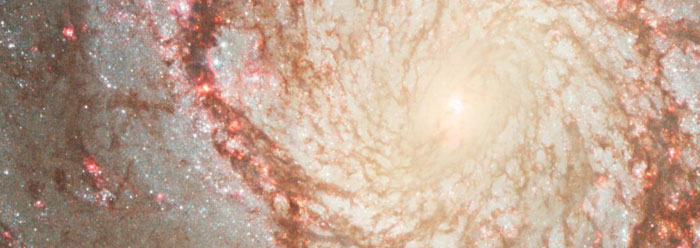Recently a new word has appeared in cosmological literature: multiverse. You won't find it in the dictionary, because it contains a contradiction in terms: multiple universes. By definition, the universe is supposed to include everything. One cannot have multiple everythings. The story of how this new word came about reveals the desperation of atheists trying to escape overwhelming evidence for design.
Naturalists want to explain the universe as a necessary outcome of laws and initial conditions, instead of a "roll of the dice." The Big Bang theory, inflation, and the search for structure in the cosmic background radiation are all part of this tradition. Everyone knows the universe looks designed. The design argument took on renewed urgency in the 1930s when quantum physicists realized that certain constants, like the force of gravity and the charge on the electron, could have taken arbitrary values—yet most values would never produce a universe with atoms, stars, planets, or observers. The universe appears finely tuned for our existence. To naturalists, this looks disturbingly unnatural.
One early escape from the design inference was the so-called Anthropic Principle. In its weakest form, it dismissed design by saying that if the laws and constants weren't what they are, we wouldn't be here to worry about the question. Stronger forms have asserted that our existence determines the laws of physics, or even that we create the universe by existing to observe it. Needless to say, most naturalists have dismissed such speculations as metaphysical fluff. The Anthropic Principle became a spent fad by the 1990s.
Something was discovered in 1996 that brought cosmologists kicking and screaming back to the Anthropic Principle: the universe is not only expanding, it's accelerating. The acceleration parameter, or cosmological constant, appears so finely tuned (nearly zero, but slightly positive) that almost any larger value would prohibit the formation of stars and galaxies. Theoretical predictions are off by 120 orders of magnitude.
Some hoped that superstring theory would come to the rescue, but its champions found that their equations permit 10500 different sets of initial conditions—most of them life-prohibiting. The only way our universe could be explained, therefore, was either by a Designer who chose the right values or by luck among untold numbers of alternate universes with random values.
Sadly, this is the escape hatch many have chosen. With his 2005 book Cosmic Landscape: String Theory and the Illusion of Intelligent Design, Leonard Susskind launched a passionate schism among cosmologists. Growing numbers are caving in to his multiverse concept with its anthropic overtones, while others, with no explanation for the fine-tuning of the universe, cling to their faith in naturalism. They argue that multiverse theory relies on alternate realities that are unobservable even in principle.
Occam's Razor would surely prefer a single Designer to uncountable universes. These are good days for churches to preach out of Isaiah 45, with its winning scientific cosmology: "|He| formed it to be inhabited."
* David F. Coppedge works in the Cassini program at the Jet Propulsion Laboratory.
Cite this article: Coppedge, D. 2006. There’s Only One Universe. Acts & Facts. 35 (12).














